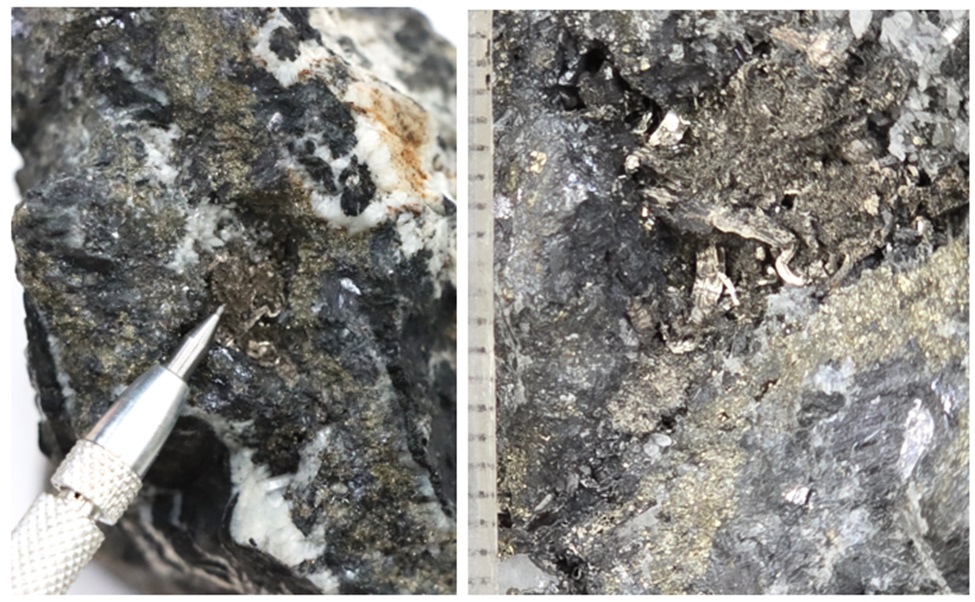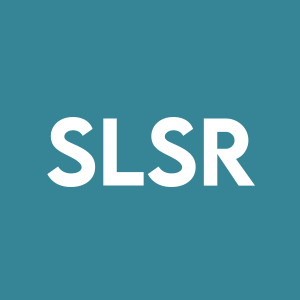Solaris Reports 11,570 g/t Silver and 12.3 g/t Gold in First Assays From Sampling Epithermal Mineralization Discovered As Part of Warintza Regional Exploration Program
Rhea-AI Summary
Solaris Resources has announced significant assay results from its regional exploration near the Warintza cluster in southeastern Ecuador. Sampling in the newly discovered southern area returned up to 11,570 grams per tonne (g/t) of silver and 12.3 g/t of gold across a 30cm breccia outcrop. Ongoing exploration has expanded the area of interest several kilometers south of the Caya-Mateo area. The company plans to initiate exploration drilling in late Q3/24 or early Q4/24. Initial sampling has indicated high concentrations of epithermal pathfinder elements over a 1km by 2km area. Detailed mapping and sampling are in progress, and follow-up programs in the Caya-Mateo area are scheduled to start in July. Solaris uses rigorous QA/QC protocols to ensure the reliability of the data, verified by a qualified professional geologist.
Positive
- Sampling in the newly discovered southern area returned high values of up to 11,570 g/t silver and 12.3 g/t gold.
- The regional exploration has expanded the area of interest several kilometers south of the Caya-Mateo area.
- Follow-up exploration drilling is planned for late Q3/24 or early Q4/24.
Negative
- None.
News Market Reaction 1 Alert
On the day this news was published, SLSR declined 2.52%, reflecting a moderate negative market reaction.
Data tracked by StockTitan Argus on the day of publication.
VANCOUVER, British Columbia, June 25, 2024 (GLOBE NEWSWIRE) -- Solaris Resources Inc. (TSX: SLS; NYSE: SLSR) (“Solaris” or the “Company”) is pleased to announce the first significant precious metals assays from ongoing regional exploration that has expanded the footprint of epithermal-style mineral alteration from the Caya area into the adjacent Mateo target and now several kilometers further south. Reconnaissance rock-chip sampling in this new southern area returned values of up to 11,570 grams per tonne silver (“g/t Ag”) and 12.3 grams per tonne gold (“g/t Au”) across 30cm of breccia outcrop discovered as part of this program. Follow-up fieldwork is underway to refine targets for exploration drilling in late Q3/24 or early Q4/24.
Figure 1 – Intermediate Sulphidation Epithermal Mineralization

Notes to Figure 1: Left – sample from an intermediate sulphidation breccia outcrop associated with illite clay alteration. Assays across 30cm averaged 11,570 g/t Ag, 12.3 g/t Au, 2,630 ppm As and 4,560 ppm Sb. Right – silica-lined cavity from same sample displaying open space filling textures and native silver wire bundles (scale bar in 1mm intervals).
Highlights
- Ongoing regional exploration east of the Warintza cluster has expanded the area of interest for epithermal mineralization from the Caya-Mateo area several kilometres to the south (Figure 2)
- Epithermal deposits can be genetically related to porphyry systems and host rich concentrations of gold and silver, with this association well documented in southeastern Ecuador
- The newly-sampled southern area is affected by minor fault splays off a major regional fault thought to be of Jurassic age, with kilometer-scale displacement across it
- This fault separates intrusive-dominated geology to the west hosting the Warintza porphyry cluster from primarily volcanic-sedimentary geology to the east hosting epithermal mineralization
- The footwall (western side) of this fault forms the margin of an adjacent north-south pull-apart basin filled with volcanic-sedimentary sequences
- Initial reconnaissance rock-chip sampling in this area has returned values of up to 11,570 g/t Ag and 12.3 g/t Au across 30cm of breccia outcrop with exceptionally high concentrations of epithermal pathfinder elements (Figure 1)
- In addition to the above, sporadic high gold values of between 4 g/t and 9 g/t, with silver values up to 150 g/t, in rock chip sampling have also been returned, with anomalous pathfinder values consistently occurring over an area 1km by 2km
- The working exploration concept is that these samples represent high-level expressions of an intermediate sulphidation epithermal system at depth
- Detailed mapping and sampling of this area has commenced, with vectors from geochemical data and mineral alteration to be used to refine targets
- Separately, recent sampling and spectral mapping in the Caya-Mateo target area have outlined pathfinder element and alteration anomalies at the margins of overlying sandstones (Figure 3)
- Mateo requires follow-up programs to extend coverage southeast over this large target area and establish metal and alteration zonation to define its core
- A series of geotechnical holes previously planned in Caya-Mateo to support Pre-Feasibility technical studies near the epithermal target area, are expected to commence in July and are expected to provide valuable exploration data
- Initial exploration drilling at Caya, Mateo and the new southern area will be planned on the basis of the ongoing exploration work and scheduled for late Q3/24 – early Q4/24
Figure 2 – Warintza Regional Exploration Program Epithermal Targets

Note to Figure 2: Image shows distribution of clay alteration minerals relative to faults and gold values in rock chip sampling. For reference, the location of copper mineralization constituting the Warintza Cluster is shown in blue ovals (Warintza West, Warintza Central, Warintza East & Southeast, and Warintza South.
Figure 3 – Caya-Mateo Soil Geochemistry

Technical Information and Quality Control & Quality Assurance
Sample assay, soil and rock sample assay results have been independently monitored through a quality control/quality assurance (“QA/QC”) program that includes the insertion of blind certified reference materials (standards), blanks and field duplicate samples. Logging and sampling are completed at a secured Company facility located on site. Sample pulps are sent to ALS Labs in Lima, Peru and Vancouver, Canada for analysis. Total copper and silver contents are determined by four-acid digestion with AAS finish. Gold is determined by fire assay of a 30-gram charge. In addition, selected pulp check samples are sent to Bureau Veritas lab in Lima, Peru. Both ALS Labs and Bureau Veritas lab are independent of Solaris. Solaris is not aware of any drilling, sampling, recovery or other factors that could materially affect the accuracy or reliability of the data referred to herein. The technical data has been verified by Jorge Fierro, M.Sc., DIC, PG, using data validation and quality assurance procedures under high industry standards.
Qualified Person
The scientific and technical content of this press release has been reviewed and approved by Jorge Fierro, M.Sc., DIC, PG, Vice President Exploration of Solaris who is a “Qualified Person” as defined in National Instrument 43-101 Standards of Disclosure for Mineral Projects. Jorge Fierro is a Registered Professional Geologist through the SME (registered member #4279075). On behalf of the Board of Solaris Resources Inc.
For Further Information
Jacqueline Wagenaar, VP Investor Relations
Direct: 416-366-5678 Ext. 203
Email: jwagenaar@solarisresources.com
About Solaris Resources Inc.
Solaris is advancing a portfolio of copper and gold assets in the Americas, which includes a world class copper resource with expansion and discovery potential at its Warintza Project in Ecuador; a series of grass roots exploration projects with discovery potential in Peru and Chile; and significant leverage to increasing copper prices through its
Cautionary Notes and Forward-looking Statements
This document contains certain forward-looking information and forward-looking statements within the meaning of applicable securities legislation (collectively “forward-looking statements”). The use of the words “will” and “expected” and similar expressions are intended to identify forward-looking statements. These statements include statements that follow-up fieldwork is underway to refine targets for exploration drilling in late Q3/24 or early Q4/24, the newly-sampled southern area is affected by minor fault splays off a major regional fault thought to be of Jurassic age, with kilometer-scale displacement across it, the working exploration concept is that these samples represent high-level expressions of an intermediate sulphidation epithermal system at depth, detailed mapping and sampling of this area has commenced, with vectors from geochemical data and mineral alteration to be used to refine targets, Mateo requires follow-up programs to extend coverage southeast over this large target area and establish metal and alteration zonation to define its core, a series of geotechnical holes previously planned in Caya-Mateo to support Pre-Feasibility technical studies near the epithermal target area, are expected to commence in July and are expected to provide valuable exploration data, initial exploration drilling at Caya, Mateo and the new southern area will be planned on the basis of the ongoing exploration work and scheduled for late Q3/24 – early Q4/24. Although Solaris believes that the expectations reflected in such forward-looking statements and/or information are reasonable, readers are cautioned that actual results may vary from the forward-looking statements. The Company has based these forward-looking statements and information on the Company’s current expectations and assumptions about future events including assumptions regarding the regional exploration program and Pre-Feasibility technical studies. These statements also involve known and unknown risks, uncertainties and other factors that may cause actual results or events to differ materially from those anticipated in such forward-looking statements, including the risks, uncertainties and other factors identified in the Solaris Management’s Discussion and Analysis, for the year ended December 31, 2023 available at www.sedarplus.ca. Furthermore, the forward-looking statements contained in this news release are made as at the date of this news release and Solaris does not undertake any obligation to publicly update or revise any of these forward-looking statements except as may be required by applicable securities laws.
Photos accompanying this announcement are available at:
https://www.globenewswire.com/NewsRoom/AttachmentNg/34212f4f-4deb-425a-99b9-0b955e6f351a
https://www.globenewswire.com/NewsRoom/AttachmentNg/5c7c94e7-e8fd-4d9d-bae7-72f6e773495f
https://www.globenewswire.com/NewsRoom/AttachmentNg/a6b427dd-7c1f-44b3-b665-cade4ad04d3e







